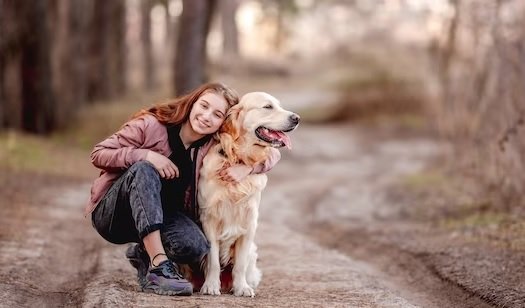5 Simple Ways to Petproof Your Yard and Keep Your Furry Friend Safe

Having a house and a big yard is a dream come true for many pet owners. However, the yard is not always the safest place for your little friend to play in. If you want to avoid any dangers to its health, you should make sure to petproof your yard on time. Take a look at 5 simple ways you can do that.
For more information on durable and stylish property protection, check out PVC fencing for your home.
Install a reliable fence
If you don’t already have a fence around your yard but want to adopt a new puppy, having a furry friend will be the best time to install one. The reason is not only a possibility that your dog can escape. The truth is that you can’t control your neighbor’s dog or cat scratching post in case they want to show up in your yard. The best way to keep your dog safe is to allow them a safe and fenced space where they can play and move around freely. Keep in mind that invisible fences might look better from your perspective, but they won’t stop other walking dogs from barking at yours. So, if you have a pet that’s sensitive to new encounters, you should consider a sturdier fence by Cedar Mountain Fence instead. You can choose the one made out of wood panels, bricks, or iron.
Most houses already have a fence, but if yours doesn’t, don’t worry. Now you’ll have the option to choose the best one for your dog. For example, if you have a white picket fence, it might not be high enough to contain a German Shepard. So, if you’re doing this from scratch, make sure to research the best options so you can petproof your yard successfully.
Remove hazardous plants, objects, and chemicals
Keeping your dog outside of your home has its pros, but it can also be a harmful environment for it. Your furry friend doesn’t know which items are hazardous for it and which ones are not. To keep your pet safe and petproof in your yard, you will have to remove any hazardous plants, objects, and chemicals.
Plants
When it comes to plants, some flowers like tulips, sunflowers, and oleanders are not good for dogs. Moreover, these can be poisonous. If you’re not sure which plants to keep in your yard or not, you can always ask a local vet for advice. Surprisingly, some fruits that even animals can eat (like apples) can be poisonous for pets. Even though the fruit is not, the apple, cherry, and lemon trees all have chemicals that could potentially be dangerous for a dog.
If you love having a full-size garden, make sure to consult with professionals first. Besides the obvious danger some plants can bring, it’s a good chance your dog will play with potted plants, chew them and pee on them when in the yard. If possible, try to fence the part where you sit and relax with your family and decorate that part of the yard with plants. The rest of the yard should be free of plants and ready for your furry friend to play and run around.
Tools and garage inventory
You might already be thinking about it, but it’s good to have a reminder. Sharp objects and yard tools should not be in the open if you have a dog around. While you think some inventory will be stable and heavy to move, you can be surprised what a dog can turn over when playing around. Therefore, before allowing your dog to play in the yard, it’s essential to ensure that any sharp, rusty, or pointy objects, including power tools, are properly stored in a safe and secure place. This will help create a safe environment for both your dog and everyone in your household.
Make sure your furry friend has shade in the yard
Another way to petproof your yard is to make sure your furry friend has everything it needs – from food and water to sunshade. During spring and summer months (or entire year if you live in warmer climates), you should provide shade for your dog. If you have large tree canopies – it might work well. However, it’s better to consider a dog house or a corner of the yard that is colder during the summer months.
The easiest way to create shade for your furry friend is to use pieces of wooden beams to create a little tent or a doggy house. When it comes to outside heat, this is the most efficient way to petproof your yard.
Take care of your turf
The grass can be the most visually pleasing part of your yard. A short, mowed grass is what makes your yard what it is, right? When it comes to petproofing your yard, you should know that tall grass can be potentially harmful to all furry animals, especially household dogs. Small insects like fleas, bugs, and ticks can transmit various diseases to your pet and create a large bill at your local vet.
So, when it comes to your turf, you want to keep it in good condition – clean it and keep it short at all times. If necessary, you could treat the grass in your yard with some protective chemicals like pesticides and fertilizers, but make sure not to let your pet sniff those for a few days.
Secure the pool
If you have a pool in your yard, you might want to secure it not only for pets but also children. Every family with kids or pets should consider a fence around their outdoor pool. Not only can your dog slip and fall into the pool at any time, but they can even drown. If you don’t want to keep your dog alone near the pool while you’re not at home, you can always consider doggy daycare. Even if your dog is a good swimmer, you might want to keep the pool free of dog hair, especially if you have small kids around. So, a good way to petproof your yard is to install a fence that you can put in place and de-install when you need to.
Conclusion
If you want to make sure your pet can enjoy the full potential of your yard, you will have to make it a safe place for them. Dogs and cats often don’t know what’s best for them, so any sharp objects, chemicals, or hazardous plants could be dangerous for them. If you want to petproof your yard, make sure to do your research and get to know how you can adapt this place for your furry friend.












